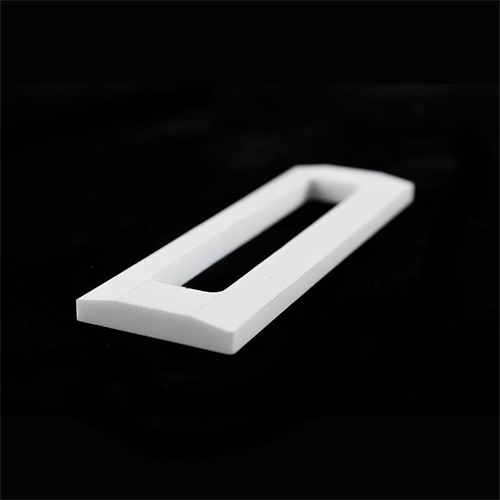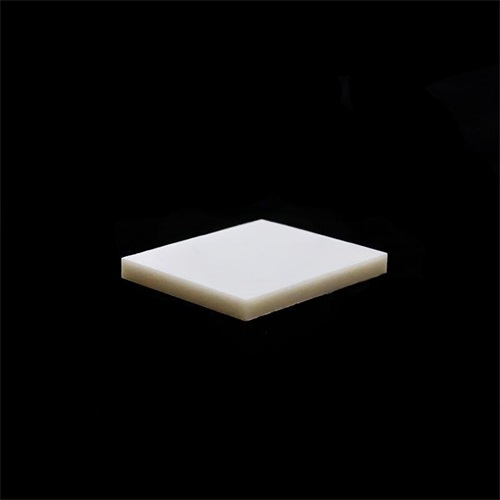What are the biomedical applications of alumina ceramics
Aluminum oxide ceramics (Al ₂ O3) have been widely used in the biomedical field due to their excellent biocompatibility, high hardness, wear resistance, and chemical stability.
Alumina ceramic is a high-performance ceramic material with high hardness, excellent wear resistance, good chemical stability, and biological inertness. These characteristics make it an ideal material for the biomedical field, especially in applications that require long-term implantation and mechanical loading. With the advancement of medical technology, alumina ceramics have shown great potential in artificial joints, dental restorations, bone replacement materials, and other fields.

Biomedical properties of alumina ceramics
The advantages of alumina ceramics in biomedical applications mainly include:
-High biocompatibility: No rejection reaction with human tissues, no inflammation or toxic reactions.
-Excellent wear resistance: More resistant to wear than metals and polymers, reducing particles generated by friction in implants.
-Chemical stability: Almost no corrosion or degradation occurs in physiological environments.
-High hardness and strength: suitable for load-bearing parts such as artificial joints and dental implants.

Application of alumina ceramics in biomedical fields
Orthopedic applications (artificial joints, bone repair)
(1) Artificial hip and knee joints
Aluminum oxide ceramics are widely used in friction pairs of artificial hip and knee joints, such as femoral heads and acetabular liners. Compared to metal polyethylene combinations, aluminum oxide aluminum oxide or aluminum oxide polyethylene combinations can significantly reduce wear rates and minimize bone resorption and prosthesis loosening caused by wear particles.
-Problem solved:
-Traditional metal joints are prone to corrosion and release metal ions (such as cobalt and chromium), which may cause allergies or toxic reactions.
-Polyethylene wear particles may trigger inflammatory reactions, leading to prosthesis failure.
(2) Bone repair and bone replacement materials
Aluminum oxide ceramics can be used for bone defect repair, such as spinal fusion and fracture fixation. Due to its porous structure, it can promote bone tissue growth and improve the long-term stability of implants.
-Problem solved:
-Traditional metal bone plates may lead to osteoporosis due to stress shielding effects.
-Degradable polymers have insufficient strength and cannot be used for load-bearing parts.
Dental applications (implants, restorations)
(1) Dental implants
Alumina ceramics are used for dental implants and crown restorations due to their aesthetic properties (close to natural tooth color) and biocompatibility.
-Problem solved:
-Metal implants may affect aesthetics, and some patients may be allergic to metals.
-Although zirconia ceramics have high strength, their cost is relatively high, while alumina ceramics provide an economically efficient alternative solution.
(2) Orthodontic bracket
Aluminum oxide ceramic brackets have high wear resistance and are transparent and aesthetically pleasing, making them suitable for patients with high aesthetic requirements.
drug delivery system
The nano porous structure of alumina ceramics can be used as drug delivery carriers, such as local delivery of anticancer drugs or antibiotics.
-Problem solved:
-Traditional drug delivery systems, such as polymer microspheres, may experience sudden drug release due to rapid degradation.
-Alumina ceramics can provide a stable release rate and improve therapeutic efficacy.
Other applications
-Cochlear implants and auditory implants: The insulation properties of alumina ceramics can be used for packaging electronic implants.
-Surgical instruments: High hardness makes them suitable for minimally invasive surgical tools, such as endoscope components.

Challenges and improvement directions of alumina ceramics
Despite the excellent performance of alumina ceramics in the biomedical field, there are still some limitations:
-High brittleness: fracture may occur, especially in high stress environments.
-High processing cost: The manufacturing process of precision ceramic components is complex and costly.
Improvement direction:
-Composite ceramic materials, such as alumina zirconia composite materials, improve toughness and strength.
-3D printing technology: optimizing porous structures to promote bone integration.

Alumina ceramics have shown great potential in fields such as orthopedics, dentistry, and drug delivery due to their excellent biocompatibility, wear resistance, and chemical stability. Despite brittleness and cost issues, alumina ceramics are expected to play a more important role in future biomedical applications through material optimization and manufacturing technology advancements.
Brudeze Ceramics supplies and sells a wide range of high-quality quartz glass, including alumina ceramics, zirconia ceramics, silicon nitride ceramics, aluminum nitride ceramics, silicon carbide ceramics, boron carbide ceramics, bioceramics, machinable ceramics, etc. We can meet the customization requirements of various ceramic products.
PREVIOUS:What is alumina ceramic injection molding process
NEXT:What are the applications of alumina ceramics in the electronics industry
CATEGORIES
LATEST NEWS
- Petrochemical ceramic injec...
- Zirconia Ceramic Rod Custom...
- High-temperature resistance...
- What is the wear resistance...
- What is the hardness of cer...
- Aluminum oxide ceramic cust...
- What are the main aspects o...
- What are the mechanical pro...
- Thermal properties of zirco...
- What properties should be c...
